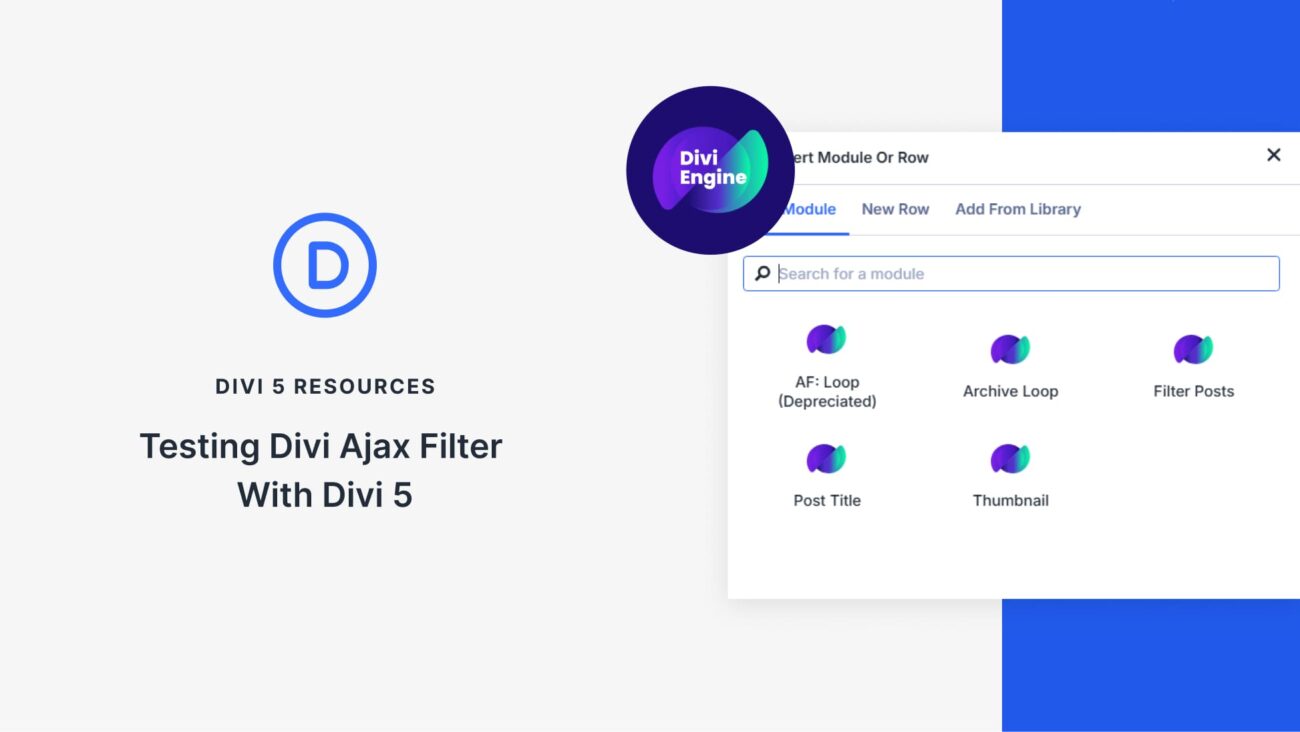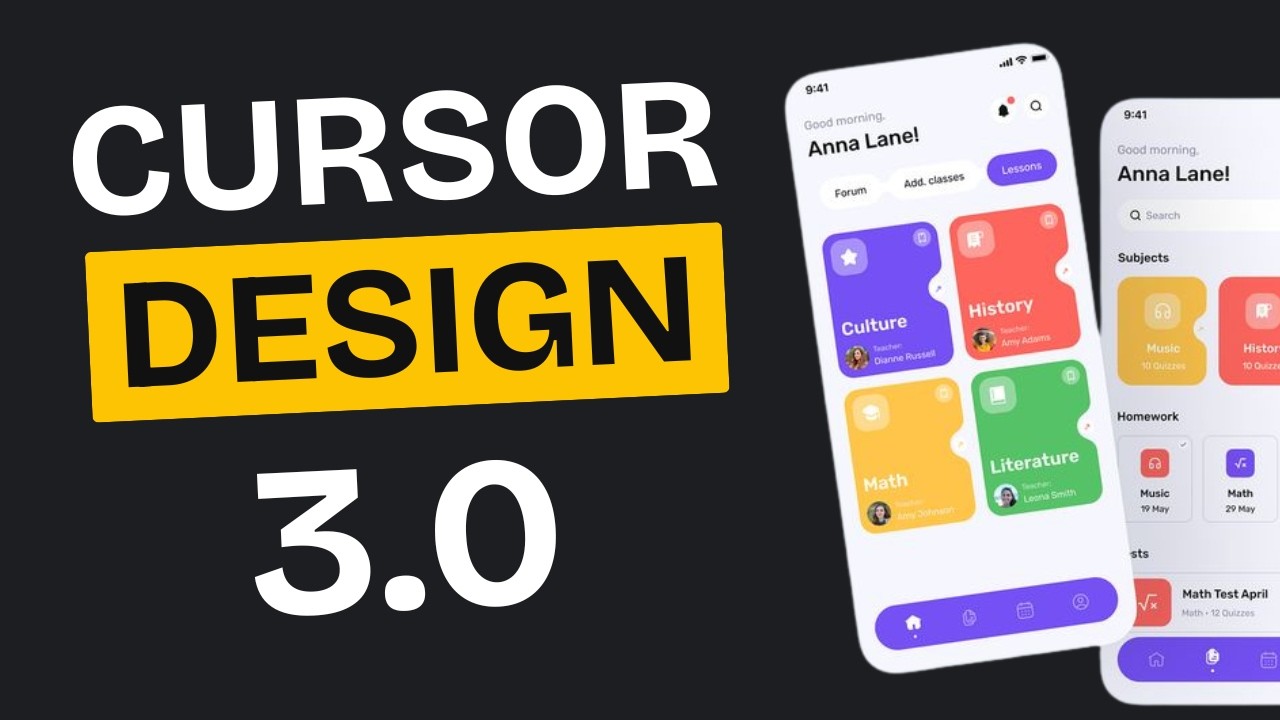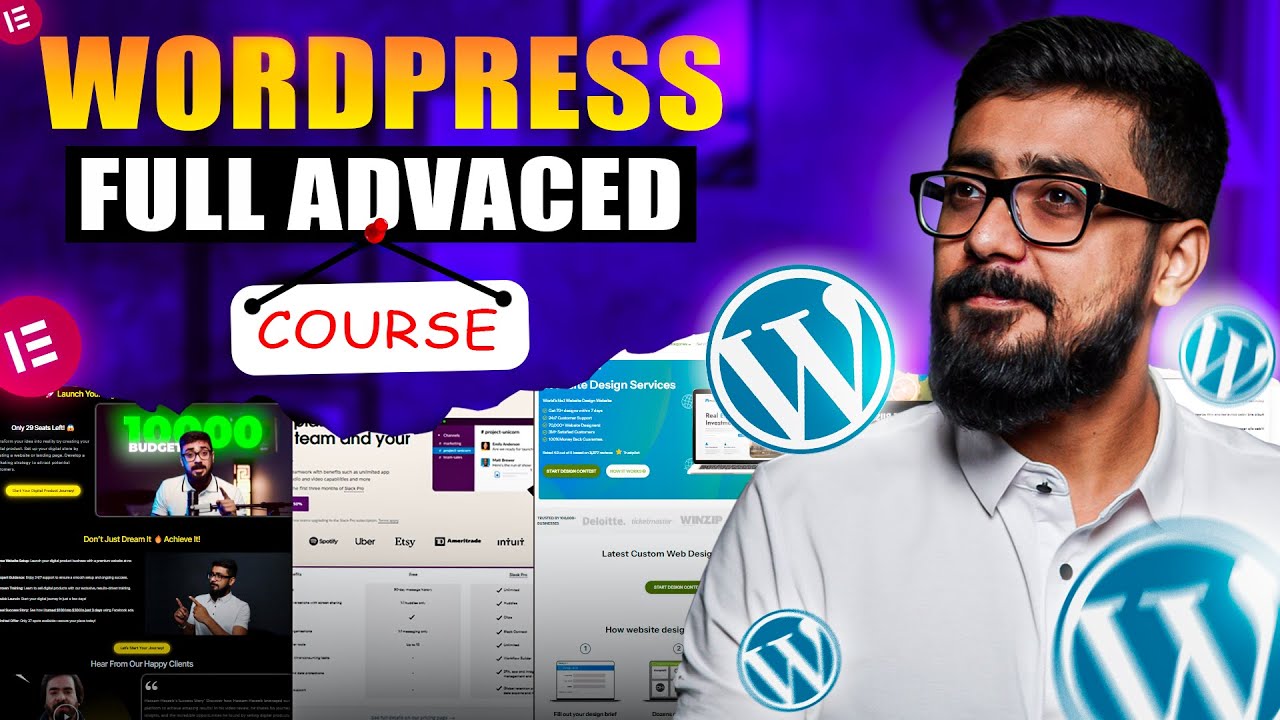Blog
Introduction to Mastering WordPress in 2024
WordPress powers over 43% of websites globally, cementing its position as the go-to platform for bloggers, businesses, and developers. Whether you’re launching a blog, portfolio, or e-commerce site, understanding its fundamentals is essential. This guide simplifies everything you need to know about WordPress—no prior experience required. Let’s dive in.
1. Getting Started: Setting Up Your WordPress Site
Before creating content, you’ll need a functioning website. Here’s a breakdown of the process:
Choose Between WordPress.com vs. WordPress.org
- WordPress.org: Offers full control, custom domains, and plugins. Ideal for businesses and serious bloggers. Requires third-party hosting.
- WordPress.com: A hosted solution with limited customization but no setup hassles. Suitable for hobby blogs.
Select a Hosting Provider
For self-hosted WordPress.org sites, consider performance-focused hosts like SiteGround, Bluehost, or WP Engine. Look for features such as:
- One-click WordPress installation
- SSL certificates
- 24/7 customer support
Register a Domain Name
Pick a short, memorable domain that reflects your brand. Use tools like Namecheap or your hosting provider’s domain search to check availability.
Install WordPress
Most hosts offer automated installations. Once installed, access your dashboard via yoursite.com/wp-admin.
2. Navigating the WordPress Dashboard
The dashboard is your command center. Key sections include:
Dashboard Home
Provides an overview of site activity, updates, and quick drafts.
Posts vs. Pages
- Posts: Time-sensitive blog entries (e.g., articles, news updates). Use categories and tags for organization.
- Pages: Static content (e.g., About Us, Contact, Services).
Media Library
Upload and manage images, videos, and documents. Optimize file sizes for faster loading.
Appearance
Customize themes, menus, and widgets. More on this below.
Plugins
Extend functionality with third-party tools like SEO plugins or contact forms.
Users
Add team members and assign roles (e.g., Admin, Editor, Contributor).
Settings
Configure critical parameters: permalinks, timezone, and site visibility.
3. Creating Compelling Content
Using the Block Editor (Gutenberg)
WordPress’s block-based editor lets you build layouts visually. Key blocks include:
- Paragraph: Standard text with formatting options.
- Image/Video: Embed media with alignment controls.
- Columns: Create multi-column layouts.
- Buttons: Add clickable CTAs.
Optimizing for Readability
- Break up text with subheadings.
- Use bullet points and short paragraphs.
- Add alt text to images for accessibility and SEO.
Scheduling Posts
Plan your content calendar by setting future publish dates under the “Post” settings.
4. Customizing Your Site’s Design
Choosing a Theme
Browse free and premium themes via Appearance > Themes. Prioritize responsive (mobile-friendly) designs. Popular options include Astra, OceanWP, and GeneratePress.
Customizing with the Site Editor
WordPress’s Full Site Editing (FSE) allows granular control over headers, footers, and templates in block themes.
Menus and Navigation
Create intuitive menus under Appearance > Menus. Link to pages, categories, or custom URLs.
Widgets
Add elements like search bars or recent posts to sidebars/footers via Appearance > Widgets.
5. Enhancing Functionality with Plugins
Plugins are WordPress’s secret weapon. Essential categories include:
SEO Tools
- Rank Math or Yoast SEO: Optimize content, meta tags, and readability.
- All in One SEO: Streamline technical SEO adjustments.
Security
- Wordfence: Block malicious traffic and scan for vulnerabilities.
- Sucuri: Monitor for downtime and DDoS attacks.
Performance Optimization
- WP Rocket: Cache pages and lazy-load images.
- Smush: Compress images without quality loss.
Backup Solutions
- UpdraftPlus: Schedule automated backups to cloud storage.
Tip: Avoid installing too many plugins—they can slow down your site.
6. Maintaining Your WordPress Site
Regular maintenance ensures security and performance.
Update Core, Themes, and Plugins
Outdated software is a security risk. Enable auto-updates where possible.
Monitor Performance
Use tools like Google PageSpeed Insights or GTmetrix to identify speed bottlenecks.
Backup Strategically
Store backups offsite (e.g., Google Drive, Dropbox) and test restoration processes.
Audit Content
Remove outdated posts, fix broken links with plugins like Broken Link Checker, and update existing articles.
7. Optimizing for Search Engines (SEO)
Technical SEO
- Set permalinks to “Post Name” for clean URLs (Settings > Permalinks).
- Submit your sitemap to Google Search Console.
On-Page SEO
- Include primary keywords in titles, headers, and meta descriptions.
- Use internal linking to guide visitors and spread page authority.
Mobile Optimization
Ensure themes are responsive and test mobile usability via Google’s Mobile-Friendly Test.
8. Security Best Practices
- Limit Login Attempts: Use plugins to block brute-force attacks.
- Two-Factor Authentication (2FA): Require a second verification step for logins.
- SSL Encryption: Enable HTTPS via your hosting provider.
9. Scaling Your WordPress Site
As traffic grows, consider:
- Upgrading Hosting: Switch to managed WordPress hosting or a VPS.
- Content Delivery Networks (CDNs): Serve assets faster with Cloudflare or StackPath.
- Database Optimization: Clean up unused data with WP-Optimize.
10. WordPress Trends to Watch in 2024
- AI Integration: Plugins leveraging AI for content generation and SEO.
- Block Theme Evolution: More drag-and-drop customization via FSE.
- Headless WordPress: Decoupling the front-end for faster performance.
Final Thoughts
Mastering WordPress takes time, but this guide equips you with the essentials. Start by building a solid foundation, prioritize user experience, and stay updated on trends. Whether you’re a blogger or entrepreneur, WordPress’s flexibility ensures your site evolves alongside your goals. Ready to launch? Your audience is waiting.
Elementor Pro
In stock
PixelYourSite Pro
In stock
Rank Math Pro
In stock
Related posts
Microsoft Tests Intrusive Windows 11 Boot-Up Ads for Expired 365 Subscriptions
TOP 20: melhores plugins para seu WordPress (2025) | Turbine seu site com essas dicas 🚀
Free AI tools in wordpress for content, wireframes, design, images
5-Week AI Mentorship for Startups in SF
Testing Divi Ajax Filter With Divi 5
Best Websites to Download Free GPL WordPress Themes & Plugins in 2025
3 Ways to Build ACTUALLY Beautiful Websites Using Cursor AI
Global ERP Software Market to Hit $229B by 2033 Amid Tech Boom
Top 12 Robotics AI Blogs/NewsWebsites 2025
FREE WordPress Complete Course For Beginners 2025 | How To Make a WordPress Website
【AI解説】AIと対話しHP生成WordPress.com「AI Website Builder」使い方
Competitive Robotics Programs Build Skills for AI-Driven 2025 Workforce
Products
-
 Team Showcase – WordPress Plugin
Team Showcase – WordPress Plugin
$53.71Original price was: $53.71.$4.02Current price is: $4.02.In stock
-
 ChatBot for WooCommerce – Retargeting, Exit Intent, Abandoned Cart, Facebook Live Chat – WoowBot
ChatBot for WooCommerce – Retargeting, Exit Intent, Abandoned Cart, Facebook Live Chat – WoowBot
$53.71Original price was: $53.71.$4.02Current price is: $4.02.In stock
-
 FOX – Currency Switcher Professional for WooCommerce
FOX – Currency Switcher Professional for WooCommerce
$41.00Original price was: $41.00.$4.02Current price is: $4.02.In stock
-
 WooCommerce Attach Me!
WooCommerce Attach Me!
$41.00Original price was: $41.00.$4.02Current price is: $4.02.In stock
-
 Magic Post Thumbnail Pro
Magic Post Thumbnail Pro
$53.71Original price was: $53.71.$3.69Current price is: $3.69.In stock
-
 Bus Ticket Booking with Seat Reservation PRO
Bus Ticket Booking with Seat Reservation PRO
$53.71Original price was: $53.71.$4.02Current price is: $4.02.In stock
-
 GiveWP + Addons
GiveWP + Addons
$53.71Original price was: $53.71.$3.85Current price is: $3.85.In stock
-
 ACF Views Pro
ACF Views Pro
$62.73Original price was: $62.73.$3.94Current price is: $3.94.In stock
-
 Kadence Theme Pro
Kadence Theme Pro
$53.71Original price was: $53.71.$3.69Current price is: $3.69.In stock
-
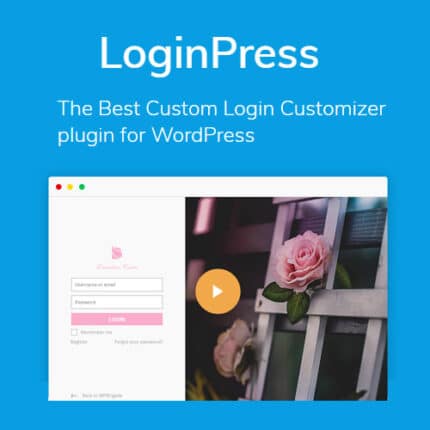 LoginPress Pro
LoginPress Pro
$53.71Original price was: $53.71.$4.02Current price is: $4.02.In stock
-
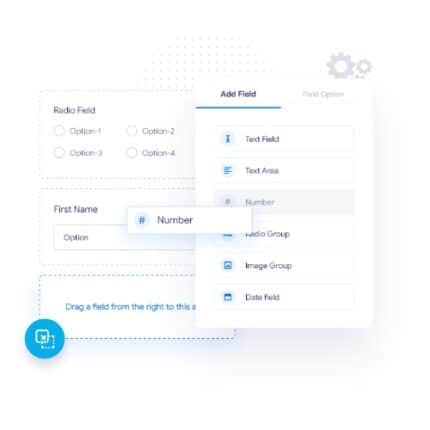 Checkout Field Editor and Manager for WooCommerce Pro
Checkout Field Editor and Manager for WooCommerce Pro
$53.71Original price was: $53.71.$3.94Current price is: $3.94.In stock
-
 Social Auto Poster
Social Auto Poster
$53.71Original price was: $53.71.$3.94Current price is: $3.94.In stock
-
 Vitepos Pro
Vitepos Pro
$53.71Original price was: $53.71.$12.30Current price is: $12.30.In stock
-
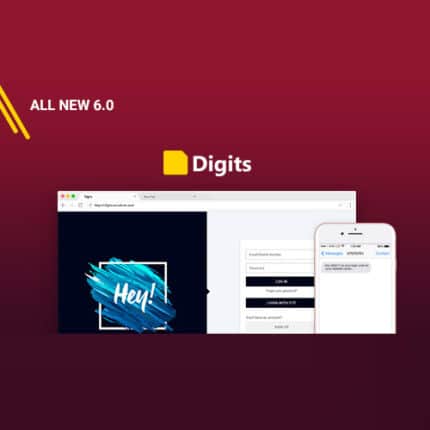 Digits : WordPress Mobile Number Signup and Login
Digits : WordPress Mobile Number Signup and Login
$53.71Original price was: $53.71.$3.94Current price is: $3.94.In stock
-
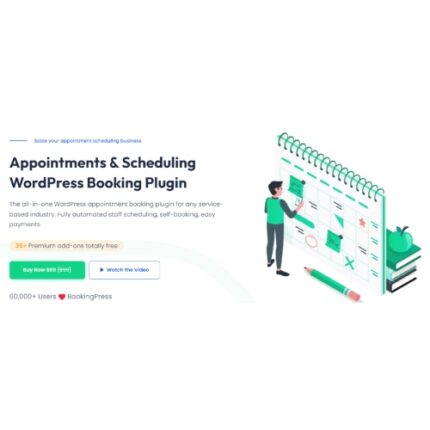 BookingPress Pro – Appointment Booking plugin
BookingPress Pro – Appointment Booking plugin
$53.71Original price was: $53.71.$3.94Current price is: $3.94.In stock
-
 Polylang Pro
Polylang Pro
$53.71Original price was: $53.71.$3.94Current price is: $3.94.In stock
-
 All-in-One WP Migration Unlimited Extension
All-in-One WP Migration Unlimited Extension
$53.71Original price was: $53.71.$3.94Current price is: $3.94.In stock
-
 Slider Revolution Responsive WordPress Plugin
Slider Revolution Responsive WordPress Plugin
$53.71Original price was: $53.71.$4.51Current price is: $4.51.In stock
-
 Advanced Custom Fields (ACF) Pro
Advanced Custom Fields (ACF) Pro
$53.71Original price was: $53.71.$3.94Current price is: $3.94.In stock
-
 Gillion | Multi-Concept Blog/Magazine & Shop WordPress AMP Theme
Rated 4.60 out of 5
Gillion | Multi-Concept Blog/Magazine & Shop WordPress AMP Theme
Rated 4.60 out of 5$53.71Original price was: $53.71.$5.00Current price is: $5.00.In stock
-
 Eidmart | Digital Marketplace WordPress Theme
Rated 4.70 out of 5
Eidmart | Digital Marketplace WordPress Theme
Rated 4.70 out of 5$53.71Original price was: $53.71.$5.00Current price is: $5.00.In stock
-
 Phox - Hosting WordPress & WHMCS Theme
Rated 4.89 out of 5
Phox - Hosting WordPress & WHMCS Theme
Rated 4.89 out of 5$53.71Original price was: $53.71.$5.17Current price is: $5.17.In stock
-
 Cuinare - Multivendor Restaurant WordPress Theme
Rated 4.14 out of 5
Cuinare - Multivendor Restaurant WordPress Theme
Rated 4.14 out of 5$53.71Original price was: $53.71.$5.17Current price is: $5.17.In stock
-
 Eikra - Education WordPress Theme
Rated 4.60 out of 5
Eikra - Education WordPress Theme
Rated 4.60 out of 5$62.73Original price was: $62.73.$5.08Current price is: $5.08.In stock
-
 Tripgo - Tour Booking WordPress Theme
Rated 5.00 out of 5
Tripgo - Tour Booking WordPress Theme
Rated 5.00 out of 5$53.71Original price was: $53.71.$4.76Current price is: $4.76.In stock
-
 Subhan - Personal Portfolio/CV WordPress Theme
Rated 4.89 out of 5
Subhan - Personal Portfolio/CV WordPress Theme
Rated 4.89 out of 5$53.71Original price was: $53.71.$4.76Current price is: $4.76.In stock
-
 Travel Tour - Travel Booking WordPress
Rated 4.50 out of 5
Travel Tour - Travel Booking WordPress
Rated 4.50 out of 5$53.71Original price was: $53.71.$4.51Current price is: $4.51.In stock
-
 Eduma – Education WordPress Theme
Rated 4.33 out of 5
Eduma – Education WordPress Theme
Rated 4.33 out of 5$53.71Original price was: $53.71.$4.51Current price is: $4.51.In stock
-
 Airtech - Plumber HVAC and Repair theme
Rated 4.80 out of 5
Airtech - Plumber HVAC and Repair theme
Rated 4.80 out of 5$62.73Original price was: $62.73.$5.33Current price is: $5.33.In stock
-
 Bookio – Book Store WooCommerce WordPress Theme
Rated 4.20 out of 5
Bookio – Book Store WooCommerce WordPress Theme
Rated 4.20 out of 5$53.71Original price was: $53.71.$4.92Current price is: $4.92.In stock









